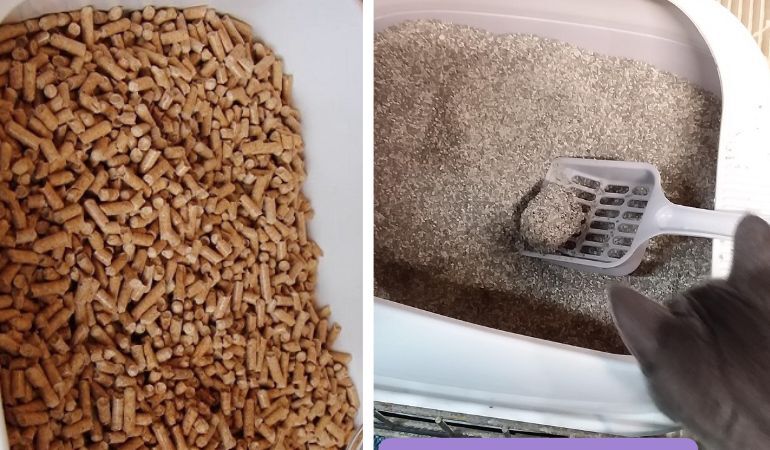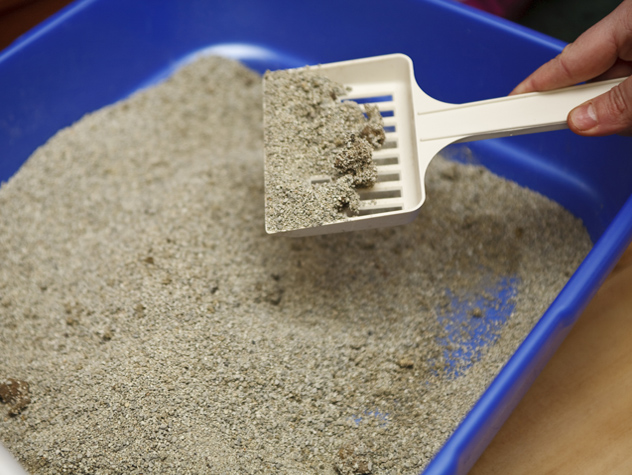Litter boxes should be replaced every 12 to 18 months for optimal cleanliness and hygiene. A clean litter box is essential for the well-being of your cat and for maintaining a healthy environment in your home.
Regular replacement of the litter box ensures that any accumulated dirt, odors, and bacteria are eliminated, promoting a fresh and sanitary space for your pet. Additionally, replacing the litter box regularly reduces the risk of urinary tract infections and other health issues for your cat.
By adhering to a proper replacement schedule, you can ensure a clean and comfortable space for your feline friend while also improving the overall cleanliness and hygiene of your home.
Factors Affecting The Lifespan Of A Litter Box
Factors affecting the lifespan of a litter box include the type of litter box, the quality of materials used, and cleaning habits. Different types of litter boxes have varying lifespans. For instance, a basic plastic litter box may need to be replaced more frequently compared to a sturdy, high-quality litter box made of durable materials.
The quality of materials used in the construction of a litter box also plays a role in its lifespan. Litter boxes made of cheap or thin materials may break or deteriorate faster over time. Opting for a litter box made of sturdy plastic or even a metal alternative can extend its lifespan.
Additionally, cleaning habits can impact the lifespan of a litter box. Regular and thorough cleaning can prevent bacteria and odors from building up, therefore prolonging the life of the litter box. Proper maintenance involves scooping waste daily, regularly replacing litter, and periodically deep cleaning the litter box.
Overall, the lifespan of a litter box depends on the type of litter box chosen, the quality of materials used, and consistent cleaning habits. By considering these factors and maintaining good litter box hygiene, pet owners can maximize the lifespan and effectiveness of their cat’s litter box.

Credit: worldanimalfoundation.org
Signs That Indicate The Need For A New Litter Box
Signs that Indicate the Need for a New Litter Box:
- Accumulation of odor: As time passes, litter boxes can develop a buildup of unpleasant odors, even with regular cleaning. The stench can become harder to eliminate, indicating the necessity for a replacement.
- Cracks, scratches, or damage: Over time, litter boxes can be subjected to wear and tear, leading to cracks, scratches, or other forms of damage. Not only can these imperfections affect the cleanliness of the box, but they can also make it more difficult to adequately clean and maintain.
- Persistent staining: If you notice that your litter box is becoming increasingly stained, even after thorough cleaning, it might be time to consider getting a new one. Stains not only contribute to unpleasant odors but can also harbor bacteria and germs.
It’s important to keep an eye out for these signs and replace your litter box accordingly. A clean and well-maintained litter box promotes a healthy and comfortable environment for your furry friend.
General Guidelines For Replacing A Litter Box
| Guidelines for Replacing a Litter Box |
|---|
|
Manufacturer’s recommendations: It is essential to follow the manufacturer’s guidelines when it comes to replacing a litter box. They provide valuable insights into the lifespan of the box and when it should be replaced. These recommendations take into account factors such as the type of material used, the quality of construction, and any specific requirements for maintenance.
Frequency based on usage: The frequency of replacing a litter box depends on how often it is used. If you have a single cat, the litter box will typically need replacing every 12-18 months. However, if you have multiple cats, it may be necessary to replace the box more frequently, such as every 6-12 months. Regular monitoring of the condition of the box is essential to determine when it requires replacement. Importance of routine maintenance: Routine maintenance is crucial in prolonging the lifespan of a litter box. Regularly scooping the litter, cleaning the box with mild detergent, and disinfecting it helps maintain hygiene and functionality. Neglecting routine maintenance can lead to unpleasant odors, bacterial growth, and an overall unpleasant experience for you and your cat. It is important to prioritize the well-being of your cat by providing a clean and suitable litter box. By following the manufacturer’s recommendations, considering usage frequency, and implementing routine maintenance, you can ensure a comfortable and healthy environment for your feline companion. |
Assessing The Condition Of Your Litter Box
Assessing the condition of your litter box is essential to ensure the well-being of your pet. Inspecting for wear and tear is the first step in determining when to replace your litter box. Look for cracks, scratches, or any damage to the sides or bottom of the box. These can harbor bacteria and make it difficult to clean, potentially causing hygiene issues.
Evaluating the level of odor control is another important factor to consider. A litter box that no longer effectively controls odors can lead to an unpleasant living environment for both you and your pet. If you find that the box is consistently emitting strong odors despite regular cleaning, it might be time for a replacement.
Finally, consider the comfort and safety of your pet. A litter box should provide a comfortable and private space for your furry friend to do their business. If you notice that your pet is hesitant to use the litter box or seems uncomfortable while inside, it may be a sign that it’s time for an upgrade.
Hygiene And Health Considerations
Regularly replacing your cat’s litter box is essential for maintaining proper hygiene and promoting their overall health. By doing so, you can prevent bacterial growth and reduce the risk of infections. **Regularly replacing the litter** helps maintain a clean and safe environment for your feline friend.
Moreover, **frequent litter box replacement also aids in minimizing the spread** **of** parasites, such as fleas and ticks. These pests can wreak havoc on your cat’s health and well-being, causing discomfort and potentially transmitting diseases.
Another benefit of regular litter box replacement is **reducing the risk of cat allergies**. **Clean and new litter** can help minimize the presence of allergens that may trigger allergic reactions in sensitive cats. This is particularly important for cats with respiratory conditions or a history of allergies.
To ensure proper hygiene and minimize health risks, consider **replacing your cat’s litter box** **every** **1-2** months or more frequently if necessary. By following these guidelines, you can ensure a clean and healthy environment for your beloved feline companion.
Proper Cleaning And Maintenance Practices
Proper cleaning and maintenance practices are crucial for maintaining a litter box. Regular scooping and waste removal are the first steps to ensure cleanliness. It is recommended to scoop the litter box at least once or twice a day to remove any solid waste. This not only keeps the litter box clean but also helps prevent bad odors.
Deep cleaning the litter box is also necessary to eliminate any remaining odors and bacteria. This can be done by washing the litter box with mild soap and water. Avoid using strong detergents or bleach as they may leave behind harmful residues.
| Tip | Description |
|---|---|
| Appropriate litter box liners | Using liners can make it easier to clean the litter box and prevent the litter from sticking to the bottom. |
| Mats | Placing a mat under the litter box can help trap excess litter and prevent it from spreading around the house. |
By following these cleaning and maintenance practices, you can ensure a clean and odor-free litter box for your feline friend.
Choosing The Right Type Of Litter Box
When it comes to keeping your cat happy and healthy, it is important to choose the right type of litter box. Assessing your cat’s preferences and needs is the first step. **Exploring different litter box designs and features** can help you find the perfect fit for your feline friend. **Considering the size and accessibility of the litter box** is also crucial in ensuring your cat feels comfortable using it.
Ensuring A Comfortable And Safe Environment
When it comes to maintaining a comfortable and safe environment for your cats, it is important to ensure that their litter box is clean and properly maintained. A litter box that is not replaced often enough can cause discomfort and even health issues for your furry friends. Providing sufficient litter box options for multiple cats is crucial as each cat should have their own space for elimination. Placing the litter box in a quiet and private area will also make your cats feel more at ease when using it. In addition, it is essential to address any behavioral issues related to litter box usage, such as aversion or refusal to use the box. By following these tips and replacing the litter box regularly, you can create a comfortable and safe environment for your cats.
Conclusion
Cats rely on clean litter boxes for their comfort and health, making it crucial to replace them regularly. Neglecting to do so can lead to odor, bacterial growth, and an unsanitary living environment. By keeping a schedule and following best practices, you can ensure the cleanliness and well-being of your furry friend.
Regular litter box replacements are a simple yet essential part of responsible cat ownership.


